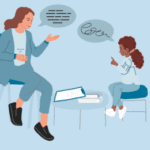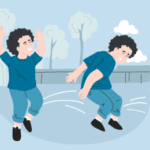
Blog
NEURODIVERSITY: Understanding the Overlap Between Autism, Sensory Processing Disorder, and ADHD
July 11, 2024
NEURODIVERSITY: Understanding the Overlap Between Autism, Sensory Processing Disorder, and ADHD
Understanding the Overlap: Autism, Sensory Processing Disorder, and ADHD
Neurodiversity encompasses a variety of cognitive differences that present unique strengths and challenges. Among these, Autism Spectrum Disorder (ASD), Sensory Processing Disorder (SPD), and Attention Deficit Hyperactivity Disorder (ADHD) are often linked due to overlapping symptoms and traits. Understanding these overlaps can help parents, healthcare professionals, educators, and therapists provide better support and foster a more inclusive environment.
Common Symptoms: Areas of Overlap
Attention Difficulties
One of the most notable overlaps between ASD, SPD, and ADHD is attention difficulties. Individuals may find it hard to focus on tasks, follow through with instructions, or switch between activities effectively. This can be due to a myriad of factors, including sensory distractions, executive functioning issues, or hyperactive tendencies.
Hypersensitivity to Stimuli
Sensory processing differences are central to all three conditions. People with ASD, SPD, and ADHD might experience hypersensitivity to stimuli such as light, sound, and touch. This hypersensitivity can lead to sensory overload, causing immense discomfort and anxiety.
Challenges with Social Interaction
Social difficulties are common across the board. Individuals may struggle with understanding social cues, engaging in reciprocal conversations, or forming meaningful relationships. These challenges can stem from differences in communication styles, sensory sensitivities, or difficulties in attention and focus.
Emotional Dysregulation
Emotional dysregulation is another shared trait. Individuals may experience intense emotions and have difficulty managing them. This can manifest as impulsivity, outbursts, or difficulties in calming down after becoming upset.
Diagnostic Challenges
Diagnosing ASD, SPD, and ADHD can be complex due to their overlapping symptoms. Misdiagnosis is common, as certain behaviors may be attributed to one condition when they could be indicative of another.
For instance, a child initially diagnosed with ADHD may later be found to have both ADHD and SPD, given the significant overlap in symptoms such as attention difficulties and sensory sensitivities. Moreover, research suggests that 30-80% of individuals with ASD also receive an ADHD diagnosis, due to genetic and neurobiological overlaps. Up to 90% of people with both diagnoses may also qualify for having SPD.
A thorough evaluation by a healthcare professional specializing in neurodevelopmental disorders is crucial for accurate diagnosis. Comprehensive assessments that consider the full range of symptoms and behaviors can help in crafting effective intervention plans.
Sensory Overload
Sensory processing differences play a crucial role across all three conditions. Sensory overload occurs when sensory input becomes overwhelming, leading to stress and anxiety. This can manifest in various ways:
- Hyperactivity or Withdrawal: Individuals may become either overly active or withdrawn in response to sensory overload.
- Self-Soothing Behaviors: Also known as “stimming,” these behaviors include repetitive actions like rocking, hand-flapping, or humming to self-regulate and manage sensory input.
Coping Strategies: Shared Mechanisms
Effective coping strategies can benefit individuals with ASD, SPD, and ADHD:
- Environmental Modifications: Creating sensory-friendly environments can reduce sensory overload. This includes using noise-canceling headphones, dimming lights, and providing sensory tools like fidget toys.
- Routine and Structure: Establishing consistent routines helps manage transitions and reduces anxiety. Visual schedules and timers can be particularly beneficial.
- Mindfulness and Relaxation Techniques: Practices like deep breathing, yoga, and meditation can help with emotional regulation and stress management.
- Personalized Support Plans: Tailored interventions that consider individual strengths and challenges are essential for effective support.
Support and Acceptance: Embracing Neurodiversity
Understanding and accepting neurodiversity is crucial for creating inclusive environments. Recognizing the unique strengths and challenges of individuals with ASD, SPD, and ADHD fosters empathy and support.
Key Points to Remember:
- Social Difficulties: Individuals may face challenges in social interactions, requiring tailored support to navigate these situations effectively.
- Organization Skills: Difficulty with organization can impact daily functioning, necessitating strategies to enhance executive functioning.
- Emotional Dysregulation: Intense emotions can be challenging to manage, highlighting the need for emotional regulation techniques.
- Sensory Behaviors: Sensory seeking or avoidant behaviors are common and require personalized interventions.
- Self-Soothing: Stimming behaviors help with self-regulation and should be understood and supported.
- Routines: Consistent routines provide stability and reduce anxiety.
- Executive Functioning: Challenges with working memory, problem-solving, and transitions necessitate targeted support.
- Sleep Difficulties: Sleep disturbances are common and require attention to improve overall well-being.
- Picky Eating: Sensory sensitivities can impact eating habits, requiring individualized approaches.
Understanding the overlaps between Autism, Sensory Processing Disorder, and ADHD is essential for providing effective support and fostering inclusive environments. By recognizing shared symptoms, addressing diagnostic challenges, managing sensory overload, and implementing coping strategies, we can better support individuals with these conditions.
Embracing neurodiversity and acknowledging the unique strengths and challenges of individuals with ASD, SPD, and ADHD is key to promoting understanding and acceptance. With tailored support systems, we can create a world where everyone thrives.
By exploring these overlaps, we hope to provide valuable insights and encourage a more inclusive approach to supporting neurodiverse individuals. If you have experiences or tips to share, we’d love to hear from you. Let’s continue the conversation and work together to make a difference.











































































